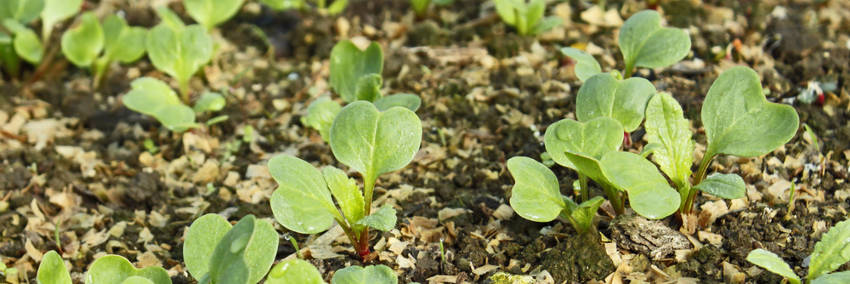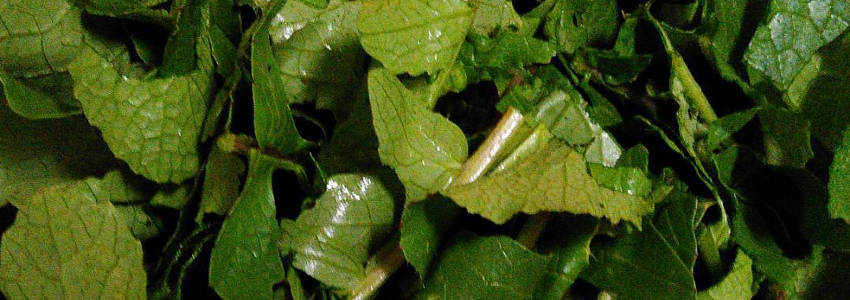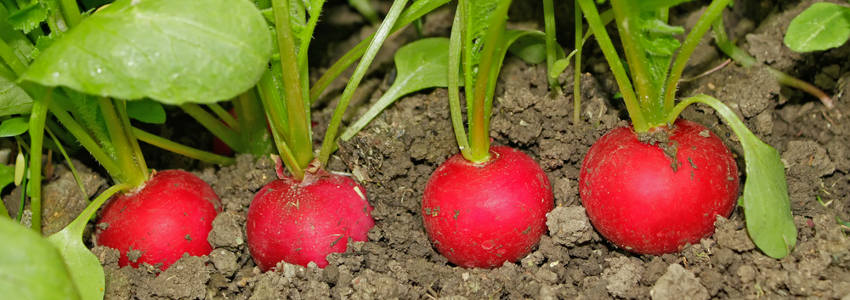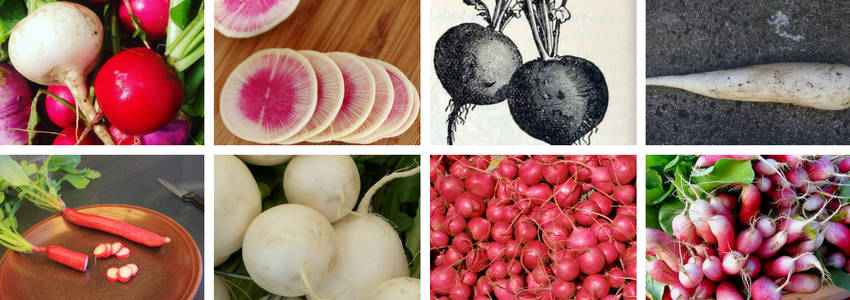When you first decide you want to grow your own fruit and vegetables, the choice of crops on offer is almost overwhelming. From strawberries to peas, tomatoes to potatoes, there are so many to choose from - and that's before you've considered the different varieties of each one! To help you narrow it down, here are five reasons why radishes should be one of the vegetables to make it to your veggie garden shortlist.

1. The first reason is that most radish varieties are fantastically quick and easy to grow, either in beds or containers. If you're lucky, you'll see the first little green leaves just a few days to a week after sowing and be harvesting your first crop from as little as three weeks. This means that for new (or impatient) gardeners, they are a great choice of crop. They also make a great gardening project for young children keen to see quick results.

2. Another great argument for growing radishes is that you can eat both the bulb and the leaves, meaning that little is wasted. While the bulb or root itself is what we tend to think of when we talk about growing or eating radishes, the leaves are just as delicious and equally good for you. The leaves, like the bulb, have a peppery taste and can be used in a number of ways. Try making a radish top pesto, soup or stir-fry and you will be surprised, but not disappointed!

3. The third reason why radishes are a good choice for your veggie garden is a practical one: they can be used as row markers. As radishes sprout so quickly, they are a great way to mark rows of other crops that take longer to germinate, such as carrots. Once the slower-growing vegetables begin to show, you can just pull and eat your row markers. Tasty and practical!
4. Radishes can not only demarcate your vegetable garden, they can also help other crops to grow. Planting a few radishes in between carrots means that the fast-germinating radishes will loosen the soil for the carrots, allowing them to grow better. Radishes planted near cucumbers or squash will help to keep beetles and pests at bay.

5. Finally, there are enough different varieties of radishes available that trying them all should keep you entertained for a good few seasons to come. Radishes come in a variety of colours, ranging from white through to green, pink, red, purple or black and can be round, oval or even oblong in shape. From small to the large and from mild to strong flavour, there's something for everyone.
So there you have it: five reasons to give radishes a try.
Browse our radish varieties here.





